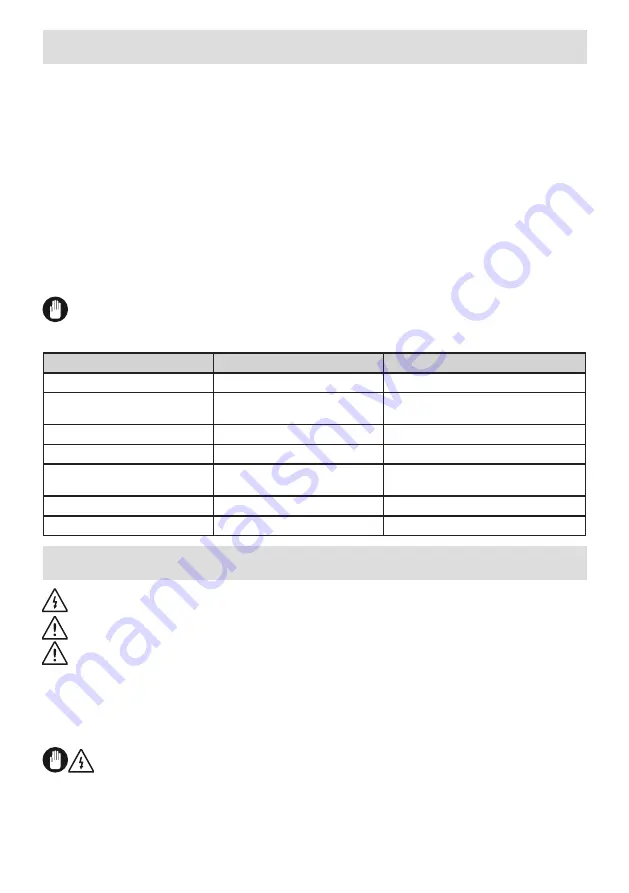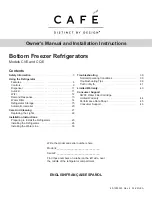
EN -11-
CHAPTER -4: FOOD STORAGE
CHAPTER -5: CLEANING AND MAINTENANCE
Disconnect the unit from the power supply before cleaning.
Do not wash your appliance by pouring water on it.
Do not use abrasive products, detergents or soaps for cleaning the appliance. After washing, rinse with clean
water and dry carefully. When you have finished cleaning, reconnect the plug to the mains supply with dry hands.
• Make sure that no water enters the lamp housing and other electrical components.
• The appliance should be cleaned regularly using a solution of bicarbonate of soda and lukewarm water.
• Clean the accessories separately by hand with soap and water. Do not wash accessories in a dish washer.
• Clean the condenser with a brush at least twice a year. This will help you to save on energy costs and increase
productivity.
The power supply must be disconnected during cleaning.
• Storing fruit and vegetables separately helps prevent ethylene-sensitive vegetables (green leaves, broccoli,
carrot, etc.) being affected by ethylene-releaser fruits (banana, peach, apricot, fig etc.).
• Do not put wet vegetables into the refrigerator.
• Storage time for all food products depends on the initial quality of the food and an uninterrupted refrigeration cycle
before refrigerator storage.
• To avoid cross-contamination do not store meat products with fruit and vegetables. Water leaking from meat may
contaminate other products in the refrigerator. You should package meat products and clean any leakages on the
shelves.
• Do not put food in front of the air flow passage.
• Consume packaged foods before the recommended expiry date.
• For normal working conditions, it will be sufficient to adjust the temperature setting of your refrigerator to +4 °C.
• The temperature of the fridge compartment should be in the range of 0-8 °C, fresh foods below 0 °C are iced and
rotted, bacterial load increases above 8 °C, and spoils.
• Do not put hot food in the refrigerator immediately, wait for the temperature to pass outside. Hot foods increase the
degree of your refrigerator and cause food poisoning and unnecessary spoiling of the food.
• Meat, fish, etc. should be store in the chiller compartment of the food, and the vegetable compartment is preferred
for vegetables. (if available)
• To prevent cross contamination, meat products and fruit vegetables are not stored together.
• Foods should be placed in the refrigerator in closed containers or covered to prevent moisture and odors.
NOTE
: Potatoes, onions and garlic should not be stored in the refrigerator.
The table below is a quick guide to show you the most efficient way to store the major food groups in your refrigerator
compartment.
Food
Maximum storage time
How and where to store
Vegetables and fruits
1 week
Vegetable bin
Meat and fish
2 - 3 Days
Wrap in plastic foil, bags, or in a meat
container and store on the glass shelf
Fresh cheese
3 - 4 Days
On the designated door shelf
Butter and margarine
1 week
On the designated door shelf
Bottled products e.g. milk and
yoghurt
Until the expiry date
recommended by the producer
On the designated door shelf
Eggs
1 month
On the designated egg shelf
Cooked food
2 Days
All shelves
Summary of Contents for SJ-LC11CTXIF-EN
Page 1: ......
Page 16: ...Service Support Visit Our Website sharphomeappliances com ...


































